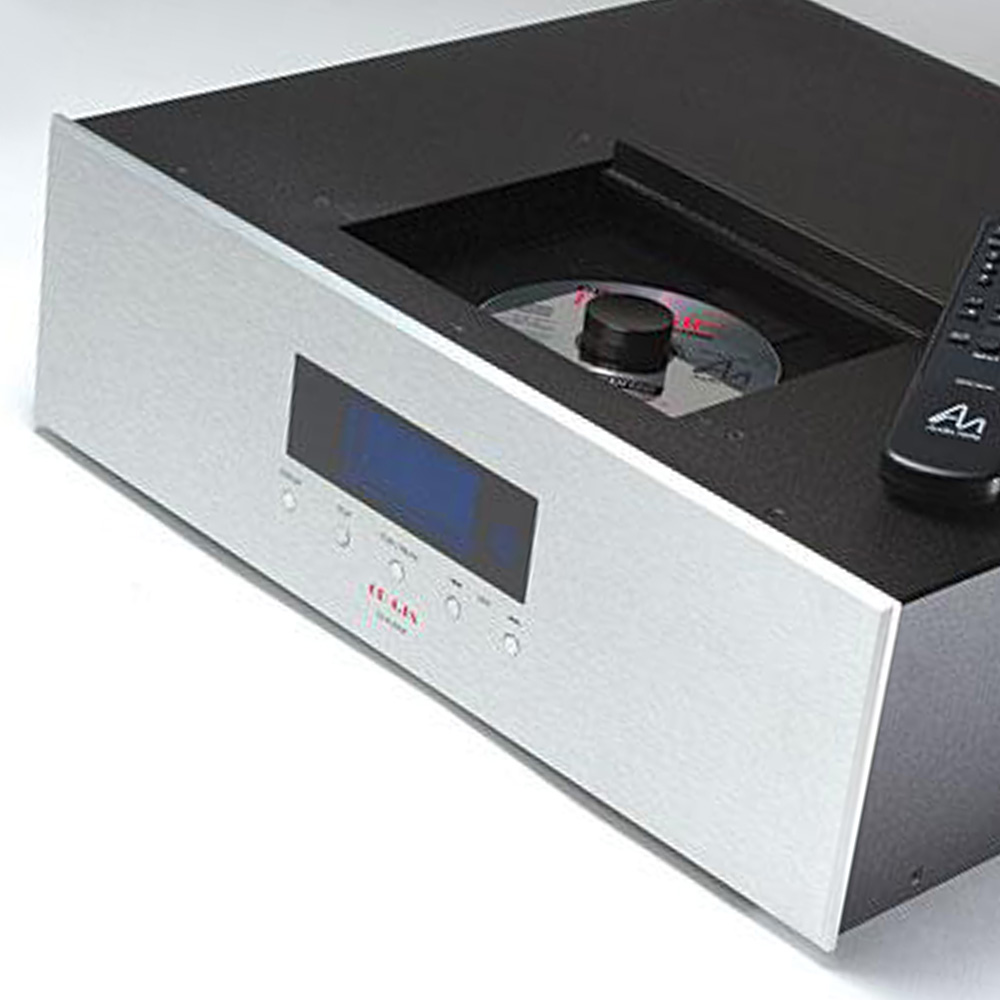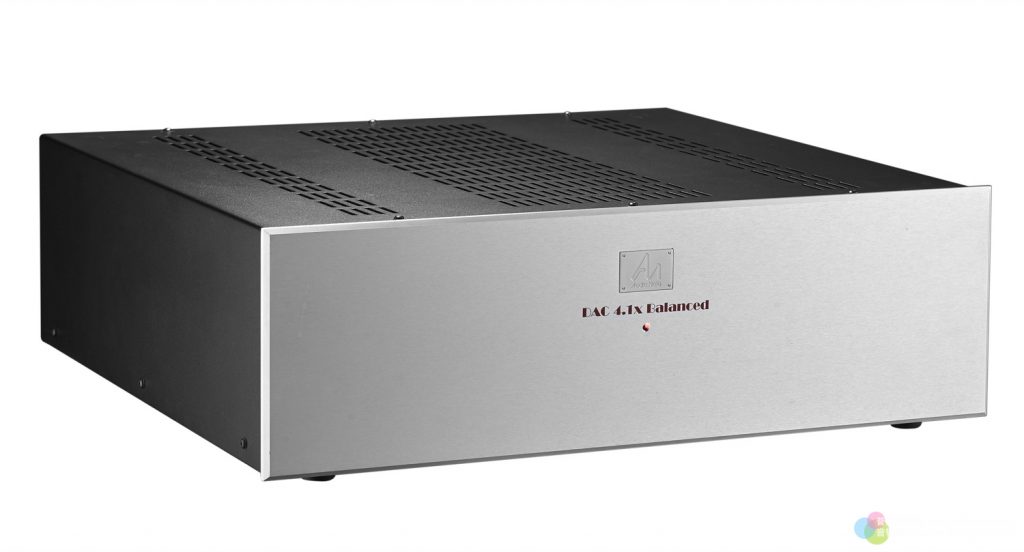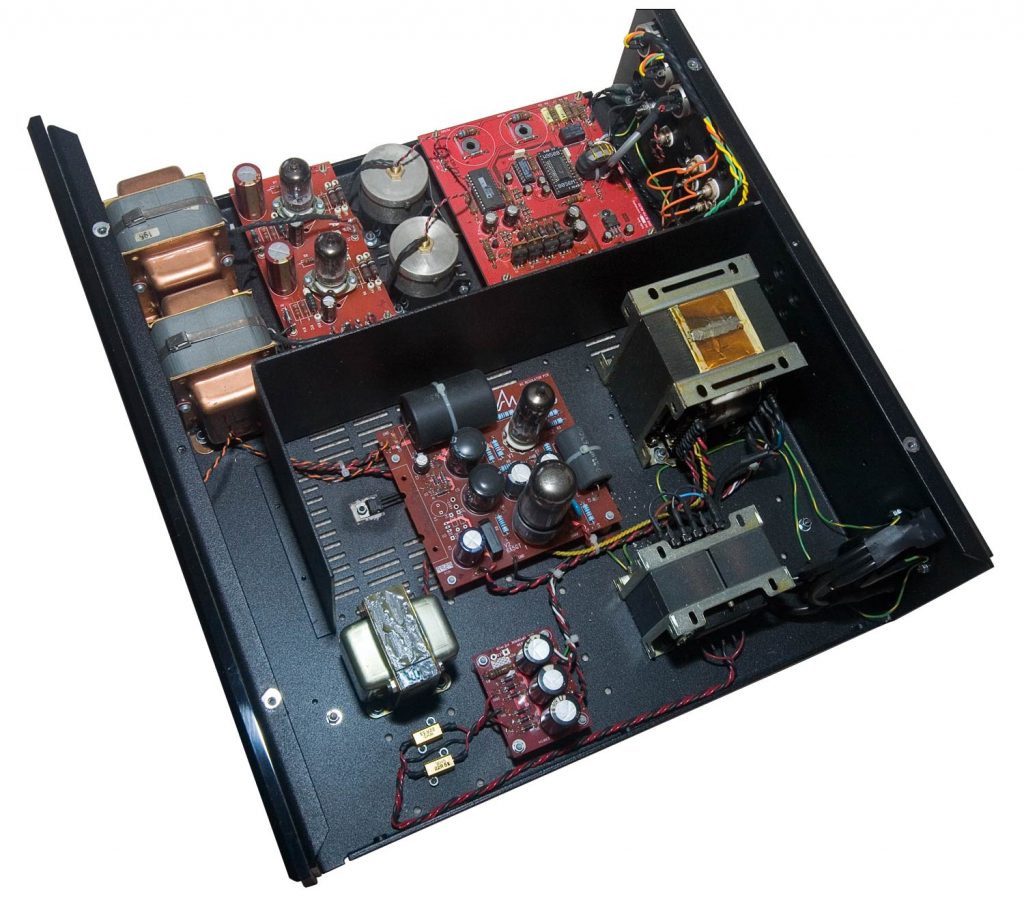It is puzzling how our factual statements about the techniques used in amplifiers, DACs etc., and our evaluative judgments of their sound live isolated, self-sustained life. Why is this a problem? It’s a problem because the two must be connected, and the latter must somehow depend on the former.
If it didn’t, two amplifiers or DACs that are identical with respect to their technical properties, could be judged to have different sonics. That doesn’t make sense. If the sound really is different, it must be because the devices differ on the technical level.
The problem is that no one seems to have full understanding of how the technical characteristics would explain and predict our making the sort of sonic evaluations we make.
Or so I think. A mainstream audio engineer does not recognize the problem. For him, all amps and DACs are technically speaking (as specified by standard measurement procedures), if not identical, at least sufficiently similar to make sonic differences non-existent or at least irrelevant to human hearing. According to them, what explains the putative sonic differences between amps and DACs is not facts about their technical properties but natural facts about their listeners such as their psychological dispositions and mental states.
That’s a possibility. But it is so against personal experiences of thousands and thousands of audiophiles and hobbyists all around the globe, and epistemically those views must count too as empirical evidence.
If audiophiles are asked, the problem lies not in their head but in the current audio engineering and in its impotency in providing us with a believable theory of the relationship between various technical solutions and the perceived sonic characteristics.
Peter Qvortrup, the father of Audio Note UK, summarized pretty well the feeling of many audiophiles when he told me: “In audio, the failure of our “science” to square the circle between providing any consistently realistic musical experience with equipment that perform well under the steady state measurements that the audio industry applies to the design of its products, has undermined the validity of the science used, but no attempts have been made to develop a science that is closer to the sonic end results it yields.”

Audio Note UK CDT 4 & DAC 4 Balanced
The quote, in a way, undermines Peter’s and AN UK’s own efforts: Why invest so much time and resources in R&D given the absence of any hard scientific evidence of its effectiveness? On the other hand, Peter proves his point by having confidence in techniques that seen from the perspective of current audio engineering, are highly unconventional, controversial even. If such techniques can credibly result in a desired sonic performance, then the current audio engineering cannot claim to possess the only truth.
Take the Audio Note UK DAC 4 Balanced as an example. Built around a selected AD1865N chip and couple of vacuum tubes, the DAC 4 Balanced features no upsampling, no digital filter and no analogue filter. Instead the signal is taken directly from the disc with silver wired and patented Audio Note I/V transformer interface, and a digital input transformer. These features alone are so unorthodoxical that most audio engineers would consider the DAC 4 as faulty!
The output stage sports two 5687 NOS double triodes coupled to a custom made 5:1 Audio Note copper wired C-core output transformer with both XLR and RCA outputs. The digital and analogue sections have separate mains transformers and power supplies with a 6X5 rectified choke. In addition, high grade Black Gate capacitors and Audio Note tantalum film resistors are used everywhere.
The CD-only CDT 4 transport features top loading in-house custom modified Philips CD Pro2LF mechanism, choke coupled 3 transformer power supply, silver wired output transformer, Audio Note SOGON cable from CD mechanism to digital output stage: balanced/unbalanced.
And a remote.
Much more than that is not known about the techniques that go in the transport and the DAC. But that’s fine because we wouldn’t be able to use the information for making predictions about their sonic end results anyway, leaving our subjective evaluations of the sound float in the air.

Comparison by Contrast
Not quite. You see, Peter/Audio Note offers us a solution too. It’s called Comparison by Contrast, a method developed by Peter together with his friend Leonard Norwitz, and it goes like this:
“The starting point of the “Comparison by Contrast” method is the simple truth that we really know only one thing about recordings and that is that they must be different, … that is, they have an individual character apart from the music on the recording itself because every recording was done at a different time by different people, in a different location/room, using different equipment, micro-phones, mixers, amplifiers, cables etc. etc.”
Every one of these differences have supposedly left their “mark” in the sonics of each recording. Following this line, the goal of any good audio system or component is then to reveal these differences and thus differentiate the sonic individuality of each recording, this being the ultimate arbiter of quality.
“The less the equipment interferes with what is on the software, the more of the individual character will reveal itself and differentiate the recording’s sound from that of other recordings, the better the gear.” Not only sonically but also technically.
So rather than using stantard measurements to assess the quality of the techniques used, listening is used to determine whether a given circuit or component improves the sound or not.
This method has guided Audio Note UK’s R&D program since the late 1980’s, and according to Peter, has helped them develop a deep understanding of what matters in audio design and what does not.
“For example, it is easily demonstrated how the benefits of better materials, silver for example, improve the sound, giving it greater authenticity and believability”, Peter clarifies.

Listening, hearing
Listening Yes, but not just any listening. First off, as we saw, no familiar reference recordings are to be used. Recordings should be listened without prejudgements about what is actually on the recording or “what should be there”. Instead a statistically sufficient number of randomly chosen recordings should make it, including some well recorded and some not so good, and then make a judgement as to how well the system or component draws out the individual sonic character of the recording.
Secondly, in describing the sound the standard variables and terms, mainly based around either sonic packaging, like imaging, sound stage and focus, or referring to pure frequency phenomena such as highs, lows, range, or distortive like harsh, bright, sharp etc., are to be avoided.
“When responsible people at Audio Note UK talk about the sound coming from a system or a component, they prefer to say that the sound has “medium”, “dynamic density”, “elasticity”, “authenticity”, “believability”, “immediacy”, “authority”, “evenness”, “colour”, “refinement” etc.”, Peter specifies.
What about music? What role does music play here if any?
“A system that individualizes each recording not only differentiates or separates the sound of each recording but primarily digs deeper into how the musicians’ handle a given piece, and thus separates the great from the merely good in a way that relying on reference recordings generally cannot consistently. Getting the maximum amount of information off the record most certainly includes all the musical subtleties that allow you an emotional access to the quality, depth of the interpretation and degree of musicianship on any given record.”
Concluding
This all in mind I set out to listen to the 30 000 euro CD player comprising the CDT 4 transport and the DAC 4 Balanced. The CDT 4 was connected to the DAC 4 with a Vovox XLR cable, and the DAC 4 to my tube pre-/power amp combo or transistor integrated (MM-Audio) with Gregitek interconnects (RCA). The speakers that took part in the test included the Audio Note AN-J and Sonus Faber Guarneri Evolution. Both the transport and the dac had the required 200 hours break-in time before them.
I naturally subjected the AN UK CD player to free listening but I did try the Comparison by Contrast too, with 10 CDs which I had played once or twice but not really had tried to assess their sonics in terms of their production and recording. The recordings are presented below. Each CD was evaluated in terms of their individual sonic character, and what the Audio Note tow box CD player appeared to make of it. Here are my general conclusions.
First, although I had some reservations about my being able to listen to the recordings as required by the Comparison by Contrast method, I could not deny that the method appeared to give some valuable insight to eg. how certain instruments such as cembalo can sound very different from one recording to another but also through different CD players. Of course, I knew that this would be the case but the AN UK method made me more convinced.
Second, with some recordings it was relatively easy to detect sonic idiosyncrasies of different recordings, while other characteristics were such that a longer period of time was required to make them open to the ear and to understand how they were related to the music in hand.
Third, at first I thought that the method would suit best for classical music, but later in the process I was forced to change my mind. In fact, one of the first recordings that brought home to me how the CBC method works, was B.B. Driftwood’s new blues record “Southward Bound” (Opus3, 2012) masterfully recorded by Jan-Erik Persson. I learned that the Comparison by Contrast method is not about listening to the properties of eg. the soundstage etc. but about being able to hear, on a semi-sub-conscious level, small cues and signs that impel the ear to focus more attentively on the music. The AN combo performed very well in this respect.
Fourth, the Comparison by Contrast method does not precondition that a device is actually compared to another. But of course, I didn’t miss the opportunity to listen to my own and much cheaper Audiomeca Kreatura/Sentec DiAna player back to back the AN UK combo. Not unexpectedly, while the AN player combo didn’t outclass my oldish player by a huge obvious margin, there were certain systematic sonic differences between the players on which the AN combo was clearly superior. For example, it conveyed better (meaning that I paid attention to) quiet and louder echoes and reverberations and low-level info in general. It also pulled the sound backwards giving it emotionally more dense and refined and live presentation.
The most important sign of its excellence was, however, the fact with one or two rare exceptions where I felt that the more straightforward, less refined approach of my player served the music equally well, I always wanted to go back to the AN UK combo, often without knowing exactly why. Just had to.
Not so long ago I compared the Wadia 381i to the AMR CD77, both excellent CD players on any criteria, although sonically representing two entirely different ideals. It was especially regretful that I couldn’t listen to the AN CD combo next to the AMR CD77 because both of them, unlike some other CD players with tubes at the output stage, represent best that can be achieved with tubes in this context. My out of the sleeve feeling is that while both sound non-digital (supposing that is an intelligent characterization), the AMR CD77 tends to make the sound appealingly lively and airy, while the AN CDT4/DAC4 prefers a more subdued and processed style adding extra weight and meaning to many music.
It is very important not to mistake this subduedness for tonal darkness. The AN CD player combo does let the higher frequencies to come through shining albeit admittedly without making big deal of it. The subduedness of the sound is musical.
Some time ago a critic wrote about the acoustics of a newly renovated concert hall in Borgå, Finland: “As soon as the orchestra begun to play Saint-Saens’ second piano concerto in g minor, the clang begun to appear interestingly dark. Darkness brought to the clang certain warmth, which however didn’t prevent high-frequency instruments from shining. It might be that the resolution was not accentuated in the same manner as in the past. In the piano concerto, various instruments of the orchestra blended into one luscious, thick romantic stream, which erupted magnificently thunderous and glowingly intoxicating ascents.” I can’t think of a more perfect metaphor for the tonal performance of the CDT 4 & DAC 4.

RANDOM RECORDINGS:
These are not scientific findings but my personal impressions.
1. Peteris Vasks: Plainscapes (Ondine, 2012)
Recorded in a cathedral with a long echo, which the system should reveal together with loads of low-level information, eg. how bass vocal lines decay and the polyphony by segregating the male vocal lines (tenor, baritone, bass). The AN UK CD did good job with this sample plus it allowed the grandeur of the sound/music to come through. The presentation was pure, calm and slightly subdued. During the loudest passages the AN combo made the sound more luminous and less compressed. A quite enjoyable recording to listen to given that it’s far from the most interesting music composed by Peter Vasks.
2. Norheim, Arne, Dodeka (Rune Grammofon, 2003)
Musically this music is close to being non-music. Sonically this recording is about electronically produced sounds, all sorts of them (bells, sticks etc.) and mostly at very high frequencies. Better equipment make better justice to the diversity of the sounds, sometimes as if adding its own spice to the richness, along with widening up the micro-scale dynamics. Such contemporary music in general benefits from high resolution and the ability of the component or system to handle HF content and making the details sound captivating without sounding bright. The AN UK CD did not sound bright but not dull either. A good compromise.
3. J.S.Bach, Die Kunst Der Fuge, BWV1080 (Harmonia Mundi USA, 2002).
Played by a consort of viola da gambas (Fretwork), this recording feature very rich and tense timbres encompassing certain brightness and aggressiveness that starts to annoy in the long run with inadequate CD players. The Audio Note CDT4/DAC4 combo made the listening experience a tad more forgiving and more refined than my own player. The AN UK CD was able to individuate the bass lines, and highlight the sensibility of the instruments.
4. G.F. Handel, Italian Cantatas (Decca/Editions de L’Oiseau-Lyre, 1985).
A little dry recording where Emma Kirkby’s voice and singing is put before the sound of the orchestra. The AN UK CD didn’t interfere with the original recording by making the recording breath better. It appeared to make the viola da gamba and cembalo sound richer than life but did not drag them more forward. Despite the qualities of the recording, Handel’s beautiful melodic lines and comforting harmonies (eg. in Tra le fiamme) were conveyed to the listener.
5. Bela Bartok, Concerto for Orchestra (EMI Classics, 1997).
This rather rare CD from the famous EMI Celibidache edition was recorded in front of a live audience. A good CD player blows air into the forte sections and retains the temporal tension in slow movements but otherwise doesn’t contribute to the sonics. Great music where rhythmic elements are in a central role, and should be respected by the CD player/ reproduction system. The AN UK CD fared well in this test; the kettle drums in presto were impressive. In the Bartok’s Concerto Celibidache knows exactly what to do, and ideally that is conveyed too.
6. Dexter Gordon, Go! (Blue Note, 1987)
This famous album is quite a typical Blue Note recording of its time: the saxophone on left, piano & bass in the middle and drums on the right hand side. It is utmost important that Gordon’s rich and diffuse sax tone is present but not on the listener’s face, and thus allow higher volume levels and the colors of the instrument be better revealed. Compared to my own CD player the sax sound on the AN UK CD was more varied and nuanced, plus reproduced richer non-harmonique noise from the cymbals, and clearer echoes. I still had the feeling no CD player can beat the sound of the original LP.
7. Lee Ritenour, Wes Bound (GRP Records, 1993)
Nostalgic but also somewhat indifferent guitar music from the 1970s. This is not a bad recording but it’s not great either, neither sonically, nor musically. Mystically even, the AN UK CD player managed to blow soul into it. The sound/music made more sense, more inner quality and more coherence. The sound had a wider spectrum, scale, fuller brass sections, and interestingly, better controlled, thick bass.
8. Jonny Lang, Wander This World (A&M Records, 1998).
The blues/r&b album is not as good as the Jonny Lang’s first and very nice sounding recording. This is one of the recordings on which the lighter tonal balance of my CD player served better. But again the AN CD player managed to better reveal the echoes of snare drums. Also, the acoustic guitar had more presence and immediacy
9. Fellini/Rota, Music from the Films of Frederico Fellini (Silva Screen Records, 1989).
This shamelessly expressive and colorful, sweet and weepy music ought to be reproduced with a big brush and heart. The music has been recorded between 1951 and 1976, and the differences in recording techniques and sonic preferences between the tracks should come out clearly. With the AN combo extra sharpness and harshness of the sound was gone, the sound of the strings more polished, the image was deeper, and there was more the “see through” quality. More weight.
10. Mamou Sidibe, Nakan (Cobalt, 2000).
The sound world of the music is typical West-African with various percussion instruments, guitars, strong low bass. Her voice too carries typical African idioms. Initially I thought that on this quite nicely recorded album the CD player would not make a big difference with this kind of music, but surprisingly, sharper sounding string pickings added genuine metal character to the string sound, better intimacy, purer and more natural voice, more concreteness, more the “on the skin” character.








